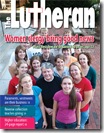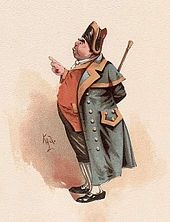Bavarian Lutheran Church
Lutherans in the United States and Canada trace their lineage through immigrants from northern Europe. Of course, Luther was German, and the Lutheran Reformation centered in the regions around the Baltic Sea. As the Evangelical Lutheran Church in America (ELCA), easily the largest and most moderate of the American Lutheran denominations, moves toward full inclusion for gays and lesbians, similar processes are underway in the traditional Lutheran churches of northern Europe. Sweden has a lesbian bishop. A bishop in Finland has announced an openness to “gender neutral marriage”. Now, the Lutheran church in conservative Bavaria announces that gay clergy partners who have entered into a legal civil union may live together in church owned parsonages:
Gay and lesbian Lutheran ministers in the conservative German state of Bavaria may live with their partners in parish parsonages, but only if they enter into a state-sanctioned civil union … According to church officials, six Bavarian ministers already live in same-sex civil unions.
Gay student editorial banned at Catholic high School
 Sean Simonson is a senior at Benilde-St. Margaret’s, a Catholic school in St. Louis Park, Minn. His editorial entitled “Life as a gay teenager” drew heated comments in the student newspaper, The Knight Errant, and the article was removed. Minnesota Public Radio (MPR) reprinted the article in full. Here is a portion:
Sean Simonson is a senior at Benilde-St. Margaret’s, a Catholic school in St. Louis Park, Minn. His editorial entitled “Life as a gay teenager” drew heated comments in the student newspaper, The Knight Errant, and the article was removed. Minnesota Public Radio (MPR) reprinted the article in full. Here is a portion:
I have considered suicide. Yes, I have considered taking my own life. Unlike six other boys recently in the news, I never took the steps to follow through on my dark thoughts, but, unfortunately, I can understand what drove them to. Because I know what it’s like to be a gay teenager.
Imagine going through adolescence: hormones raging, body changing, and relationships that go a little deeper than friendship developing. Now, add on being gay.
Don’t believe being different is difficult? Try going through a day in the life of a gay teen.
Every day you hear someone use your sexuality — a part of you that, no matter how desperately you try, you cannot change — as a negative adjective. That hurts.
You fear looking the wrong way in the locker room and offending someone. Politicians are allowed to debate your right to marry the person you love or your right to be protected from hate crimes under the law. Your faith preaches your exclusion — or damnation. And no one does anything to stop it … Oh yeah, and the words “queer,” “homo,” and “faggot” that people throw around all the time? Yeah, those might as well be personal attacks.
As an aside, there is news today that Sarah Palin’s sixteen year old daughter Willow embarrassed herself with a Facebook homophobic rant, using the personal attack terms Simonson derides. What values is she learning from her mother?
Roman Catholic Council of Bishops signals move to the right
 For progressive Catholics who thought that the solid swing to the right by the church hierarchy, away from Vatican II, couldn’t get worse, it just did. The conservative vice-president of the American Council of Bishops, in line for election to the presidency, was defeated by a right wing insurgency and an outspoken hard-liner, New York Archbishop Tim Dolan, was elected.
For progressive Catholics who thought that the solid swing to the right by the church hierarchy, away from Vatican II, couldn’t get worse, it just did. The conservative vice-president of the American Council of Bishops, in line for election to the presidency, was defeated by a right wing insurgency and an outspoken hard-liner, New York Archbishop Tim Dolan, was elected.
Conservatives [dislike the vice-president’s] reputation as a moderate who favors dialogue and persuasion over the more bully pulpit pronouncements of churchmen like … Dolan, a media-friendly but outspoken figure who became head of the New York archdiocese only last year.
[It was] conservatives’ main goal of thwarting the ascension of a progressive to the top spot; since the contemporary structure of the bishops conference was established in the 1960s, no sitting vice-president has ever been passed over for promotion to the presidency of the bishops — until now.
ELCA commits half a million dollars to cholera relief
The Evangelical Lutheran Church in America (ELCA) announced Nov. 15 that it has committed $500,000 for the prevention and treatment of cholera in Haiti, as well as continued response to communities displaced by the January 2010 earthquake. The gift is in addition to the $25,000 the church committed last week for similar purposes in Haiti.
ELCA social statement on genetics
Critics of the ELCA can find the lamest of excuses to justify their stance. A small, rural, farm community congregation of the Red River Valley of North Dakota announced that part of their rationale for leaving the ELCA is a pending social statement on genetics.
Members of the Anselm Trinity Lutheran Church near Sheldon, N.D., interpreted the ELCA’s draft statement as saying farmers who use genetically modified seeds are “pretty much sinners,” said church council president Jill Bunn.
The church is located in the Red River Valley, where farmers often use enhanced seeds to help plants resist weed killers.
Turns out that the pending social statement, which is still in draft and discussion stage, says nothing of the sort.
“If anyone reads the statement for themselves they’ll see that it does not condemn genetically engineered seeds and it doesn’t make any recommendation on farm management practices,” said Roger Willer, the ELCA staff person working with the task force developing the statement.


